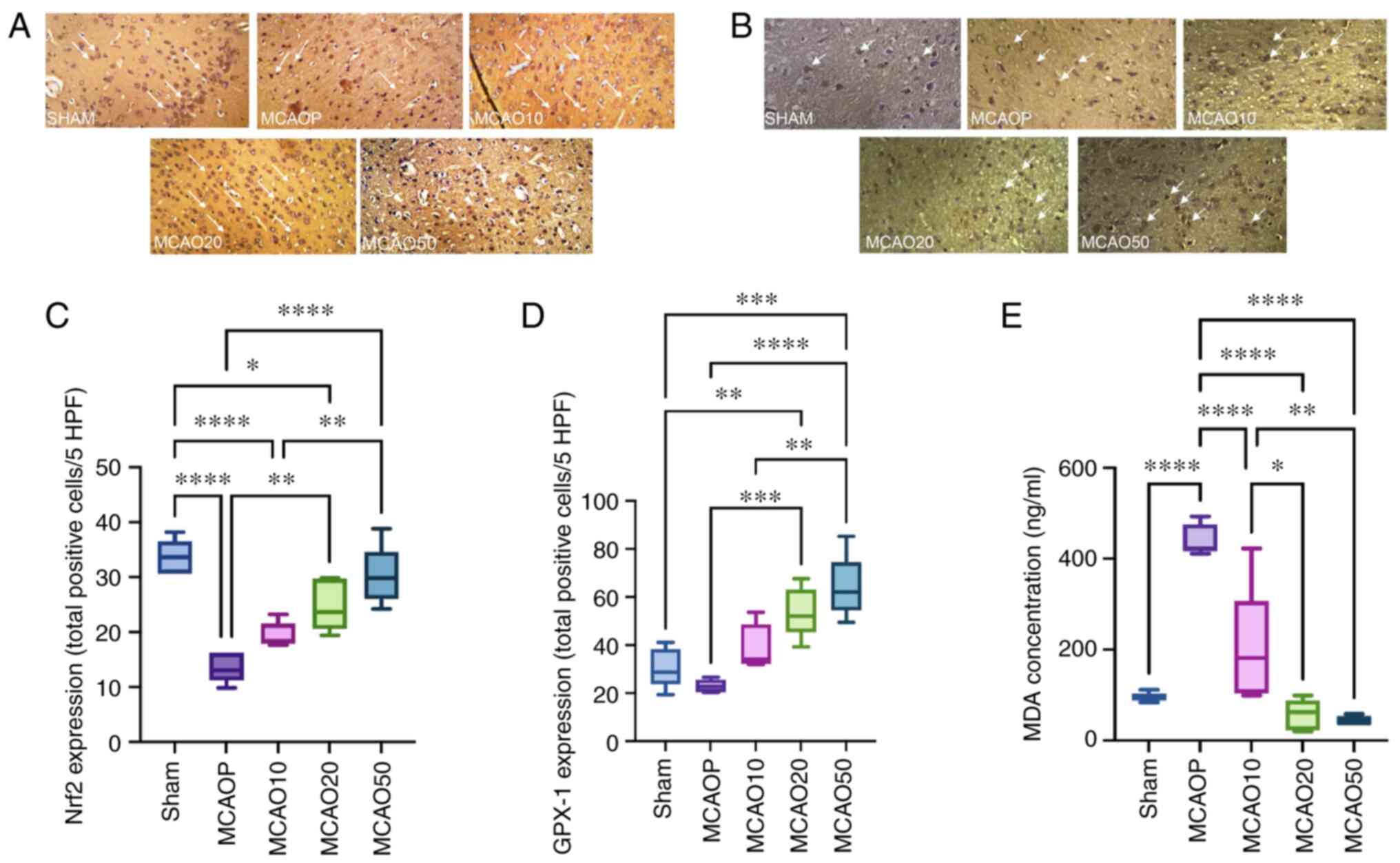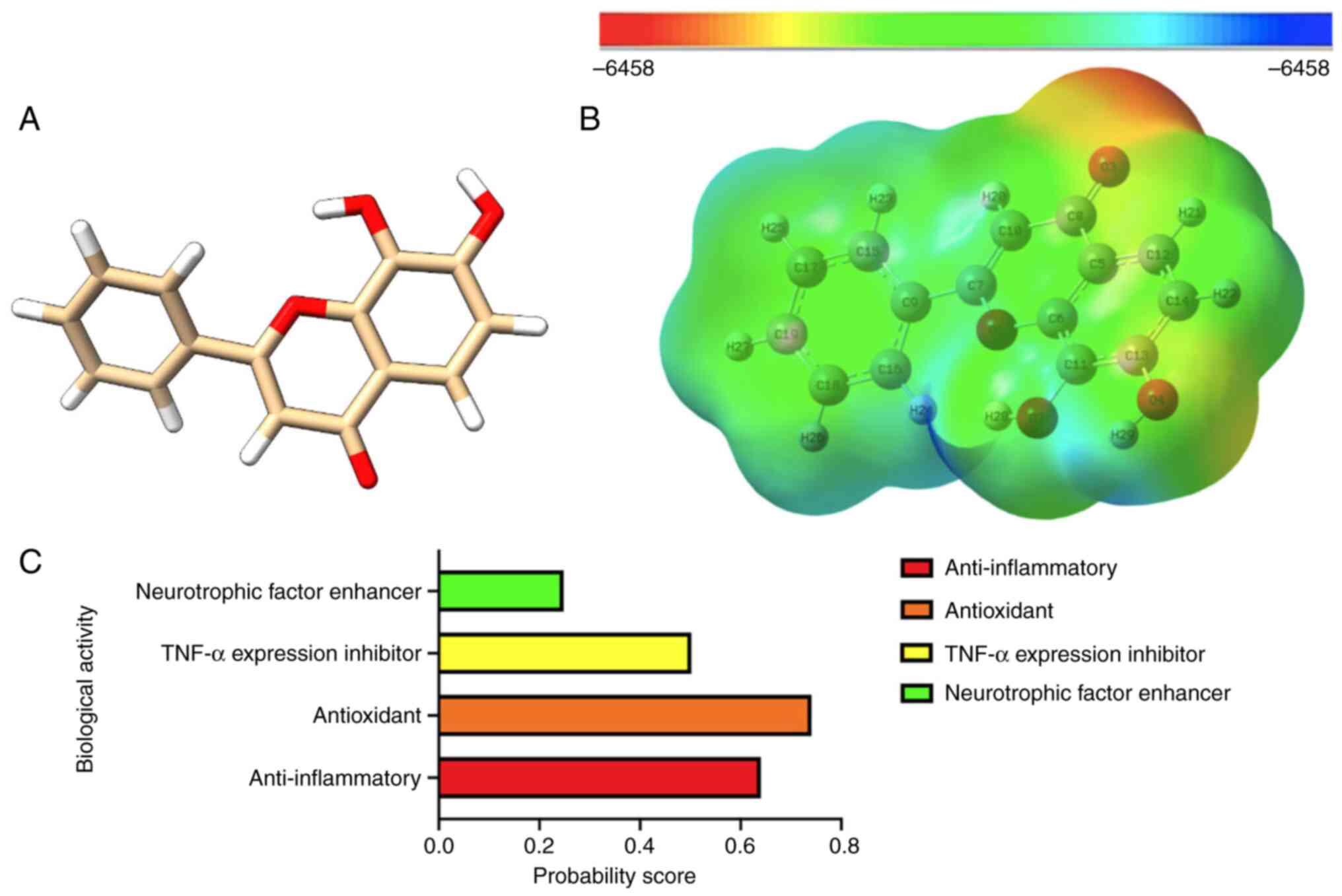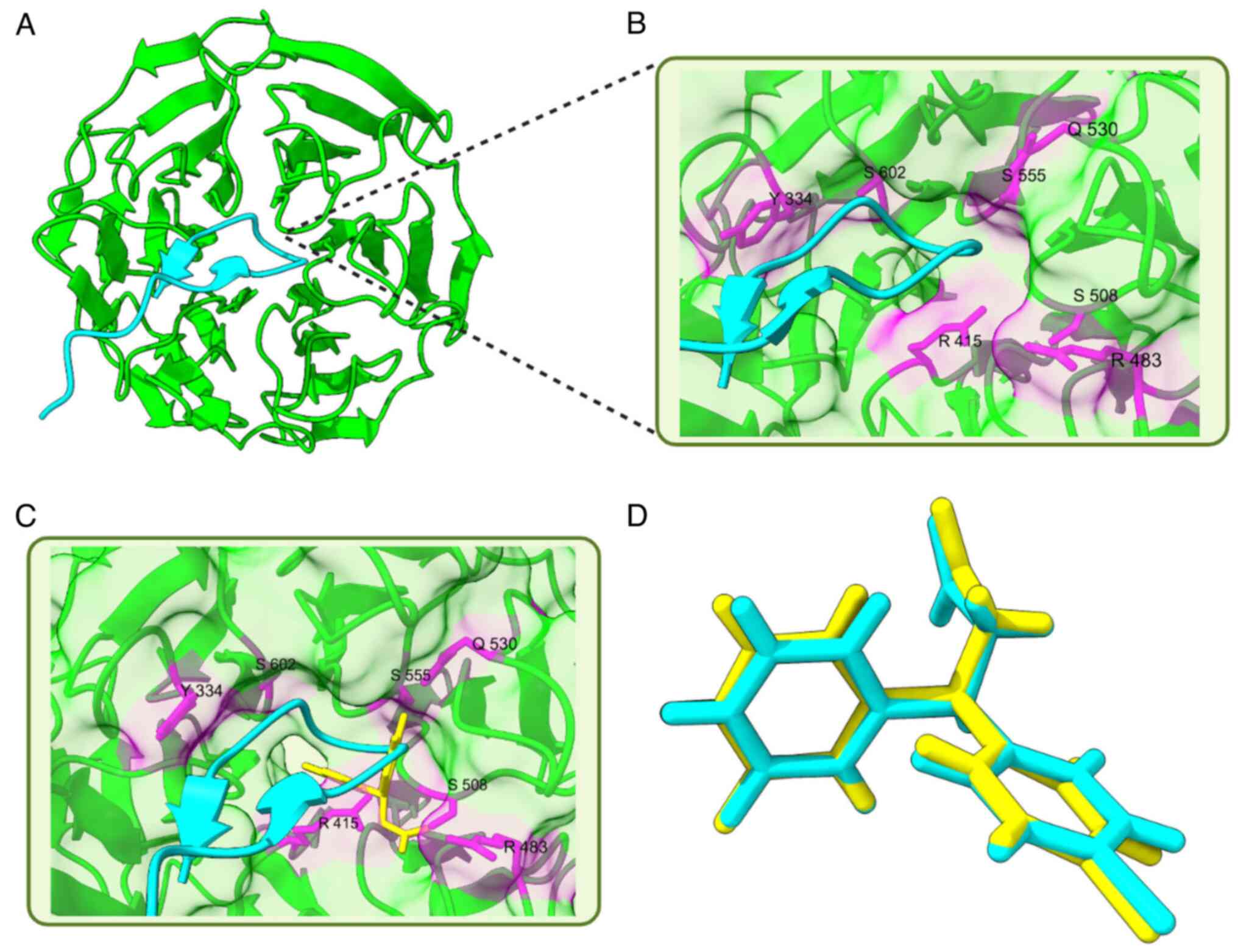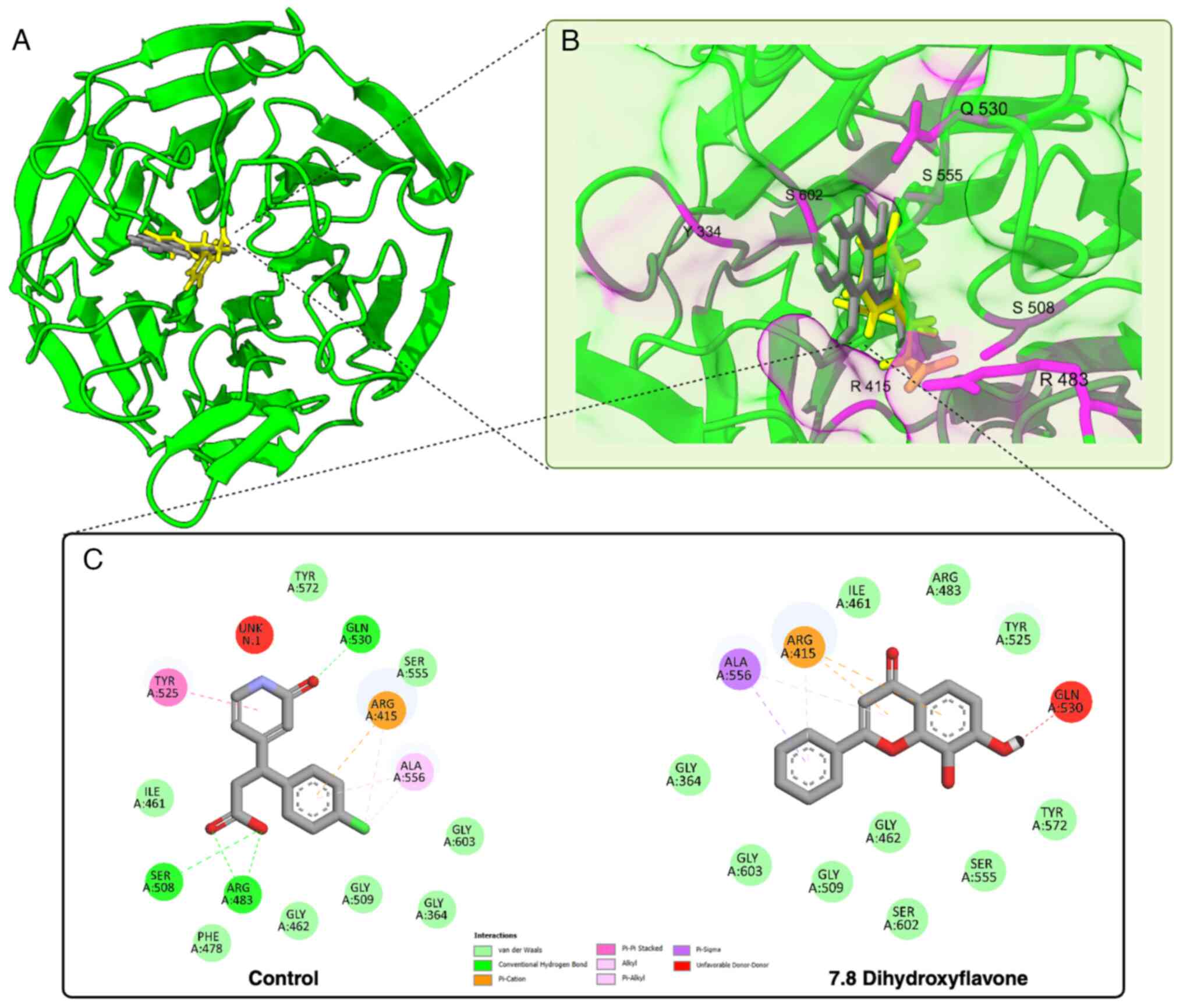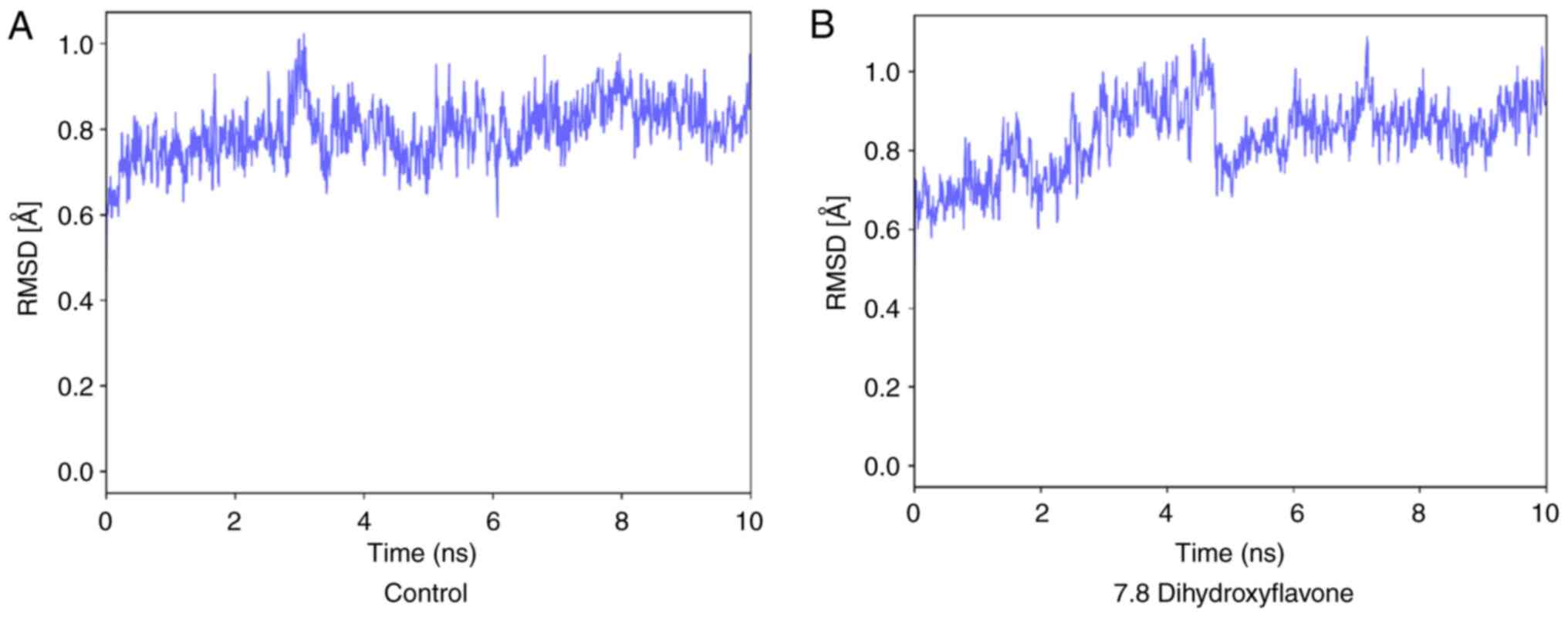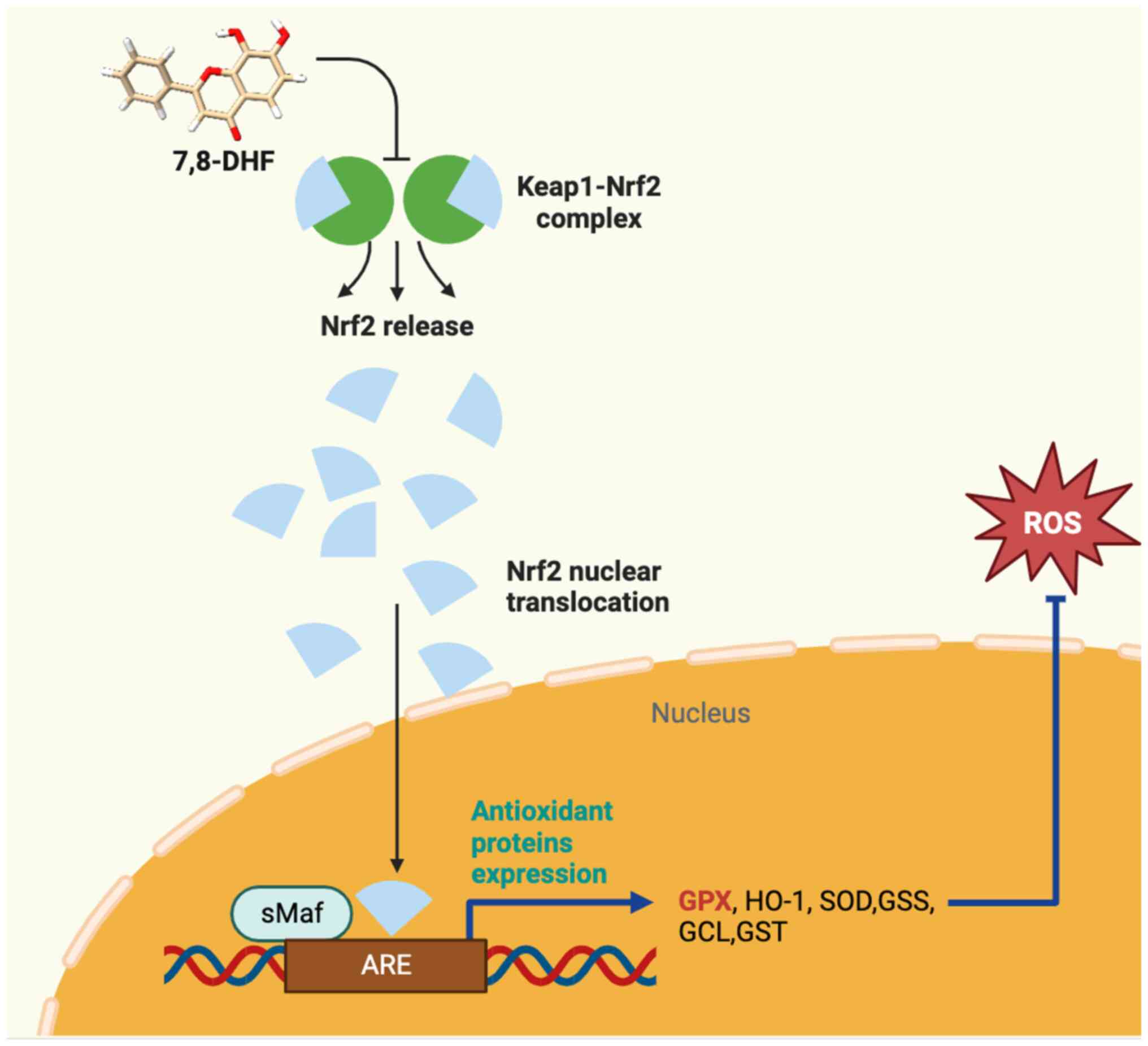|
1
|
Lin SY, Wang YY, Chang CY, Wu CC, Chen WY,
Liao SL and Chen CJ: TNF-α receptor inhibitor alleviates metabolic
and inflammatory changes in a rat model of ischemic stroke.
Antioxidants (Basel). 10(851)2021.PubMed/NCBI View Article : Google Scholar
|
|
2
|
Li Z, Bi R, Sun S, Chen S, Chen J, Hu B
and Jin H: The role of oxidative stress in acute ischemic
stroke-related thrombosis. Oxid Med Cell Longev.
2022(8418820)2022.PubMed/NCBI View Article : Google Scholar
|
|
3
|
Kurniawan DB, Rizki Syaban MF, Mufidah A,
Rafsi Zulfikri MU and Riawan W: Protective effect of Saccharomyces
cerevisiae in Rattus norvegicus Ischemic Stroke Model. Res J
Pharmacy Technol. 5785–5789. 2021.
|
|
4
|
Qian CL and Fan R: Effect of Pingchuan
Guben decoction on patients with chronic obstructive pulmonary
disease: Results from a randomized comparative effectiveness
research trial. Exp Ther Med. 14:3915–3925. 2017.PubMed/NCBI View Article : Google Scholar
|
|
5
|
Tran KT, Pallesen JS, Solbak SMØ,
Narayanan D, Baig A, Zang J, Aguayo-Orozco A, Carmona RMC, Garcia
AD and Bach A: A Comparative assessment study of known
small-molecule Keap1-Nrf2 Protein-Protein interaction inhibitors:
Chemical synthesis, binding properties, and cellular activity. J
Med Chem. 62:8028–8052. 2019.PubMed/NCBI View Article : Google Scholar
|
|
6
|
B Gowda SG, Fuda H, Tsukui T, Chiba H and
Hui SP: Discovery of eicosapentaenoic acid esters of hydroxy fatty
acids as potent Nrf2 activators. Antioxidants (Basel).
9(397)2020.PubMed/NCBI View Article : Google Scholar
|
|
7
|
Lee KH, Cha M and Lee BH: Neuroprotective
Effect of Antioxidants in the Brain. Int J Mol Sci.
21(7152)2020.PubMed/NCBI View Article : Google Scholar
|
|
8
|
González-Bosch C, Boorman E, Zunszain PA
and Mann GE: Short-chain fatty acids as modulators of redox
signaling in health and disease. Redox Biol.
47(102165)2021.PubMed/NCBI View Article : Google Scholar
|
|
9
|
Hardingham GE and Lipton SA: Regulation of
neuronal oxidative and nitrosative stress by endogenous protective
pathways and disease processes. Antioxid Redox Signal.
14:1421–1424. 2011.PubMed/NCBI View Article : Google Scholar
|
|
10
|
Sokolov AV, Dubrovskaya NM, Kostevich VA,
Vasilev DS, Voynova IV, Zakharova ET, Runova OL, Semak IV, Budevich
AI, Nalivaeva NN and Vasilyev VB: Lactoferrin induces
erythropoietin synthesis and rescues cognitive functions in the
offspring of rats subjected to prenatal hypoxia. Nutrients.
14(1399)2022.PubMed/NCBI View Article : Google Scholar
|
|
11
|
Lotfi MS and Kalalinia F: Flavonoids in
Combination with stem cells for the treatment of neurological
disorders. Neurochem Res. 48:3270–3282. 2023.PubMed/NCBI View Article : Google Scholar
|
|
12
|
Xu DP, Li Y, Meng X, Zhou T, Zhou Y, Zheng
J, Zhang JJ and Li HB: Natural antioxidants in foods and medicinal
plants: Extraction, assessment and resources. Int J Mol Sci.
18(96)2017.PubMed/NCBI View Article : Google Scholar
|
|
13
|
Aldughaylibi FS, Raza MA, Naeem S, Naeem
S, Rafi H, Alam MW, Souayeh B, Farhan M, Aamir M, Zaidi N and Mir
TA: Extraction of bioactive compounds for antioxidant,
antimicrobial, and antidiabetic applications. Molecules.
27(5935)2022.PubMed/NCBI View Article : Google Scholar
|
|
14
|
Laksmitawati DR, Prasanti AP, Larasinta N,
Agitha Syauta G, Hilda R, Ramadaniati HU, Widyastuti A, Karami N,
Afni M, Rihibiha DD, et al: Anti-inflammatory potential of
Gandarusa (Gendarussa vulgaris Nees) and Soursoup (Annona
muricata L) extracts in LPS stimulated-macrophage cell
(RAW264.7). J Natural Remedies. 16:73–81. 2016.
|
|
15
|
Park HY, Kim GY, Hyun JW, Hwang HJ, Kim
ND, Kim BW and Choi YH: 7,8-Dihydroxyflavone exhibits
anti-inflammatory properties by downregulating the NF-κB and MAPK
signaling pathways in lipopolysaccharide-treated RAW264.7 cells.
Int J Mol Med. 29:1146–1152. 2012.PubMed/NCBI View Article : Google Scholar
|
|
16
|
Liu C, Chan CB and Ye K:
7,8-dihydroxyflavone, a small molecular TrkB agonist, is useful for
treating various BDNF-implicated human disorders. Transl
Neurodegener. 5(2)2016.PubMed/NCBI View Article : Google Scholar
|
|
17
|
Chen J, Chua KW, Chua CC, Yu H, Pei A,
Chua BH, Hamdy RC, Xu X and Liu CF: Antioxidant activity of
7,8-dihydroxyflavone provides neuroprotection against
glutamate-induced toxicity. Neurosci Lett. 499:181–185.
2011.PubMed/NCBI View Article : Google Scholar
|
|
18
|
Kozics K, Valovicova Z and Slamenova D:
Structure of flavonoids influences the degree inhibition of
Benzo(a)pyrene-induced DNA damage and micronuclei in HepG2 cells.
Neoplasma. 58:516–524. 2011.PubMed/NCBI View Article : Google Scholar
|
|
19
|
Jin W: Regulation of BDNF-TrkB signaling
and potential therapeutic strategies for Parkinson's disease. J
Clin Med. 9(257)2020.PubMed/NCBI View Article : Google Scholar
|
|
20
|
Zhang R, Kang KA, Piao MJ, Ko DO, Wang ZH,
Chang WY, You HJ, Lee IK, Kim BJ, Kang SS and Hyun JW: Preventive
effect of 7,8-dihydroxyflavone against oxidative stress induced
genotoxicity. Biol Pharm Bull. 32:166–171. 2009.PubMed/NCBI View Article : Google Scholar
|
|
21
|
Rupadevi M, Parasuraman S and Raveendran
R: Protocol for middle cerebral artery occlusion by an intraluminal
suture method. J Pharmacol Pharmacother. 2:36–39. 2011.PubMed/NCBI View Article : Google Scholar
|
|
22
|
Xu W, Zhang Y, Su J, Liu AF, Wang K, Li C,
Liu YE, Zhang YQ, Lv J and Jiang W: Ischemia reperfusion injury
after gradual versus rapid flow restoration for middle cerebral
artery occlusion rats. Sci Rep. 8(1638)2018.PubMed/NCBI View Article : Google Scholar
|
|
23
|
García-Díaz Barriga G, Giralt A,
Anglada-Huguet M, Gaja-Capdevila N, Orlandi JG, Soriano J, Canals
JM and Alberch J: 7,8-dihydroxyflavone ameliorates cognitive and
motor deficits in a Huntington's disease mouse model through
specific activation of the PLCγ1 pathway. Hum Mol Genet.
26:3144–3160. 2017.PubMed/NCBI View Article : Google Scholar
|
|
24
|
Syaban MFR, Muhammad RF, Adnani B, Ami
Putra GF, Arvina SD, Budi D, Erwan NE and Krisnayana AD: Molecular
docking studies of interaction curcumin against Beta-secretase 1,
Amyloid A4 Protein, Gamma-secretase and Glycogen Synthase Kinase-3β
as Target Therapy for Alzheimer Disease. Res J Pharmacy Technol.
15(3074)2022.
|
|
25
|
Daina A, Michielin O and Zoete V:
SwissADME: A free web tool to evaluate pharmacokinetics,
drug-likeness and medicinal chemistry friendliness of small
molecules. Sci Rep. 7(42717)2017.PubMed/NCBI View Article : Google Scholar
|
|
26
|
Filimonov DA, Lagunin AA, Gloriozova TA,
Rudik AV, Druzhilovskii DS, Pogodin PV and Poroikov VV: Prediction
of the biological activity spectra of organic compounds using the
pass online web resource. Chem Heterocycl Comp. 50:444–457.
2014.
|
|
27
|
Syaban MFR, Faratisha IFD, Yunita KC,
Erwan NE, Kurniawan DB and Putra GFA: Molecular docking and
interaction analysis of propolis compounds against SARS-CoV-2
receptor: Propolis compound against SARS-CoV-2 receptor. J Tropical
Life Sci. 12:219–230. 2022.
|
|
28
|
Arviana SD, Yueniwati Y, Rahayu M and
Syaban MFR: 7,8-dihydroxyflavone as a neuroprotective agent in
ischemic stroke through the regulation of HIF-1α protein. Res J
Pharmacy Technol. 15:3980–3986. 2022.
|
|
29
|
Meng EC, Goddard TD, Pettersen EF, Couch
GS, Pearson ZJ, Morris JH and Ferrin TE: UCSF ChimeraX: Tools for
structure building and analysis. Protein Sci.
32(e4792)2023.PubMed/NCBI View Article : Google Scholar
|
|
30
|
Santoso W, Putra G, Syaban M, Vadhana R,
Khamid J, Maududi I and Sujuti H: Integrated molecular docking,
dynamic simulations and in vivo analysis of ethanol extract
Citrus sinensis peel as an antioxidant and neurotrophic
agent for ameliorating motor and cognitive functions in traumatic
brain injury. World Acad Sci J. 5(29)2023.
|
|
31
|
Ugale VG and Bari SB: Structural
Exploration of Quinazolin-4(3H)-ones as Anticonvulsants: Rational
Design, Synthesis, Pharmacological Evaluation, and Molecular
Docking Studies. Arch Pharm (Weinheim). 349:864–880.
2016.PubMed/NCBI View Article : Google Scholar
|
|
32
|
Daina A and Zoete V: A BOILED-Egg to
predict gastrointestinal absorption and brain penetration of small
molecules. ChemMedChem. 11:1117–1121. 2016.PubMed/NCBI View Article : Google Scholar
|
|
33
|
Zeiger E: The test that changed the world:
The Ames test and the regulation of chemicals. Mutat Res Genet
Toxicol Environ Mutagen. 841:43–48. 2019.PubMed/NCBI View Article : Google Scholar
|
|
34
|
Vetrivel R, Deka RC, Chatterjee A, Kubo M,
Broclawik E and Miyamoto A: Studies on the molecular electrostatic
potential inside the microporous material and its relevance to
their catalytic activity. In: Theoretical and Computational
Chemistry. Vol 3. Murray JS and Sen K (eds). Elsevier, Amsterdam.
pp509-541, 1996.
|
|
35
|
Parasuraman S: Prediction of activity
spectra for substances. J Pharmacol Pharmacother.
2(5253)2011.PubMed/NCBI View Article : Google Scholar
|
|
36
|
Heightman TD, Callahan JF, Chiarparin E,
Coyle JE, Griffiths-Jones C, Lakdawala AS, McMenamin R, Mortenson
PN, Norton D, Peakman TM, et al: Structure-activity and
structure-conformation relationships of Aryl propionic acid
inhibitors of the Kelch-like ECH-associated protein 1/nuclear
factor erythroid 2-related factor 2 (KEAP1/NRF2) protein-protein
interaction. J Med Chem. 62:4683–4702. 2019.PubMed/NCBI View Article : Google Scholar
|
|
37
|
Li N, Pang Q, Zhang Y, Lin J, Li H, Li Z,
Liu Y, Fang X, An Y, Bai H, et al: Ginsenoside compound K reduces
neuronal damage and improves neuronal synaptic dysfunction by
targeting Aβ. Front Pharmacol. 14(1103012)2023.PubMed/NCBI View Article : Google Scholar
|
|
38
|
Frandsen JR and Narayanasamy P:
Neuroprotection through flavonoid: Enhancement of the glyoxalase
pathway. Redox Biol. 14:465–473. 2017.PubMed/NCBI View Article : Google Scholar
|
|
39
|
Sivandzade F, Prasad S, Bhalerao A and
Cucullo L: NRF2 and NF-қB interplay in cerebrovascular and
neurodegenerative disorders: Molecular mechanisms and possible
therapeutic approaches. Redox Biol. 21(101059)2018.PubMed/NCBI View Article : Google Scholar
|
|
40
|
Handayani F, Setyowati S, Pudjonarko D and
Sawitri DR: The Effect of ‘SELF-HELP Packages’ on post stroke
depression among ischemic stroke survivors. Nurse Media J Nursing.
10:361–375. 2020.
|
|
41
|
Suzuki T and Yamamoto M: Molecular basis
of the Keap1-Nrf2 system. Free Radic Biol Med. 88:93–100.
2015.PubMed/NCBI View Article : Google Scholar
|
|
42
|
Hahn ME, Timme-Laragy AR, Karchner SI and
Stegeman JJ: Nrf2 and Nrf2-related proteins in development and
developmental toxicity: Insights from studies in zebrafish (Danio
rerio). Free Radic Biol Med. 88:275–289. 2015.PubMed/NCBI View Article : Google Scholar
|
|
43
|
Bellezza I, Giambanco I, Minelli A and
Donato R: Nrf2-Keap1 signaling in oxidative and reductive stress.
Biochim Biophys Acta Mol Cell Res. 1865:721–733. 2018.PubMed/NCBI View Article : Google Scholar
|
|
44
|
Lubos E, Loscalzo J and Handy DE:
Glutathione peroxidase-1 in Health and Disease: From molecular
mechanisms to therapeutic opportunities. Antioxid Redox Signal.
15:1957–1997. 2011.PubMed/NCBI View Article : Google Scholar
|
|
45
|
Antunes F, Han D and Cadenas E: Relative
contributions of heart mitochondria glutathione peroxidase and
catalase to H(2)O(2) detoxification in in vivo conditions. Free
Radic Biol Med. 33:1260–1267. 2002.PubMed/NCBI View Article : Google Scholar
|
|
46
|
Cohen G and Hochstein P: Glutathione
peroxidase: The primary agent for the elimination of hydrogen
peroxide in erythrocytes. Biochemistry. 2:1420–1428.
1963.PubMed/NCBI View Article : Google Scholar
|
|
47
|
Wei C, Sun Y, Chen N, Chen S, Xiu M and
Zhang X: Interaction of oxidative stress and BDNF on executive
dysfunction in patients with chronic schizophrenia.
Psychoneuroendocrinology. 111(104473)2020.PubMed/NCBI View Article : Google Scholar
|
|
48
|
Song Y and Han X: 7,8-Dihydroxyflavone
Protects PC12 Cells against MPP+-Induced Cytotoxicity by Heme
Oxygenase-1. ijSciences. 8:55–59. 2019.
|
|
49
|
Martin YC, Kofron JL and Traphagen LM: Do
structurally similar molecules have similar biological activity? J
Med Chem. 45:4350–4358. 2002.PubMed/NCBI View Article : Google Scholar
|















